

Table of contents
- functionality
- position
- Possible defects
- Checks, cleaning, change
A non-return valve can ensure the function of the pump even under difficult circumstances - for example with large differences in height - and is of crucial importance. Here we explain how it works in the garden pump.
functionality
A check valve can be compared in function to a heart valve. Your task can be described in three simple steps.
It refers to:
- The water drawn in by the garden pump is routed through the valve. The flap opens due to the suction and the water can flow through.
- If the suction subsides, the flap in the valve closes again. This prevents the water from the upper part of the line from flowing back behind the non-return valve.
- Due to the closure by the non-return valve, the water "stands still" above the valve and the pump can be prevented from running empty or drawing air. The pressure and water level are kept stable, which can prevent or at least reduce the risk of problems with the garden pump.
Tip:
The non-return valve should be checked at least once a year during venting in order to be able to identify and rectify problems at an early stage.
position
Exactly where the non-return valve needs to be positioned depends on the type of garden pump in question. As a rule, the manufacturer specifies the exact position of the valve in the operating instructions. This is important, among other things, when the pump is being serviced and vented or the non-return valve needs to be replaced.
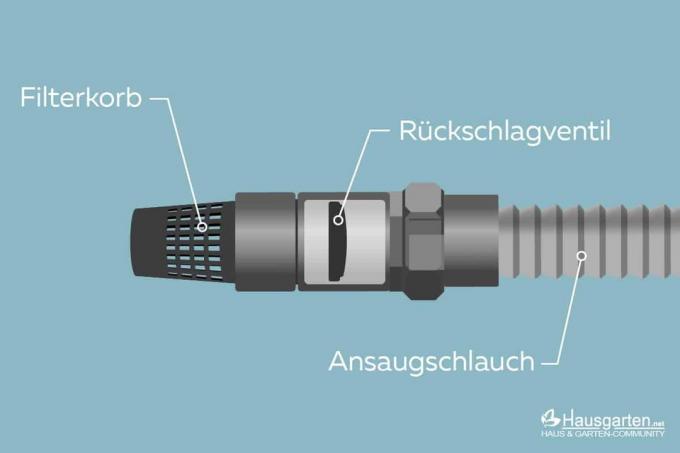
A notice:
The important component can be located between the suction hose and the pump outside or inside the device. In any case, the information provided by the manufacturer must be observed.
Possible defects
In order for the garden pump to be able to do its job, it must be functional. If there is damage to the check valve, various problems can arise. Possible defects include:
Broken seal
If the seal is broken, the water can flow back despite the valve being closed. On some models, the seal can be changed. In this way, a completely new valve does not have to be used. So the effort can be kept to a minimum.
dirt
Algae, mud or other coarse dirt particles can clog the non-return valve and thus impede the flow or even completely prevent it. Flushing with clear water or manual cleaning are therefore essential to the annual maintenance of the garden pump.
Damaged flap
If the valve or clapper is damaged, it can draw air in and prevent flow, as well as water backflow. As a rule, the component must then be replaced. Whether this measure can be carried out independently or whether a professional repair is required depends on the model in question.
Checks, cleaning, change
Before the garden pump is put into operation at the beginning of the gardening year, it should be checked and prepared.
- Cleaning by rinsing with clear water
- Use a bottle brush for heavier and more stubborn dirt
- Visual and functional check of all components
- if necessary, replacement of seals and valves
- Bleeding the garden pump
- Checking the lines for leaks
- Remove rust with suitable means
- Check connections and tighten if necessary
- wear work gloves for safety and protection against injuries
- Only carry out maintenance when the pump is switched off and at room temperature
 Home editorial office
Home editorial office
Learn more about water in the garden

How quickly does chlorine break down?
How quickly chlorine breaks down in pool water is important information for a number of reasons. It is important to know which factors play a decisive role in the degradation rate. This guide shows which influences are decisive.
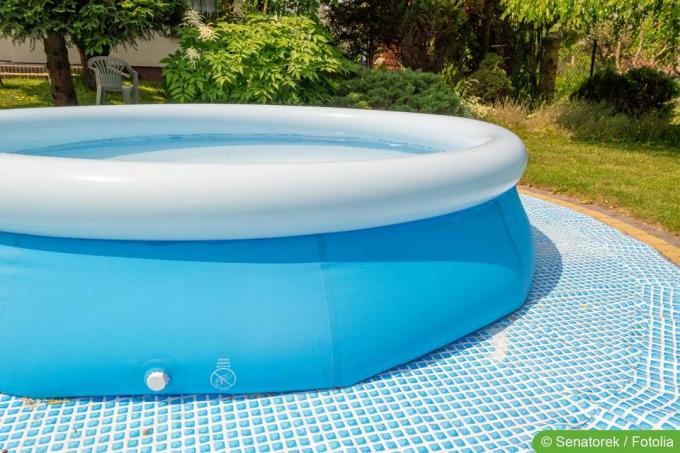
Too much chlorine in the pool: what to do?
If too much chlorine accidentally ends up in the pool or the chlorine value is inexplicably high, there are several measures you can take. This guide shows what can quickly and sustainably help and reduce the chlorine content.
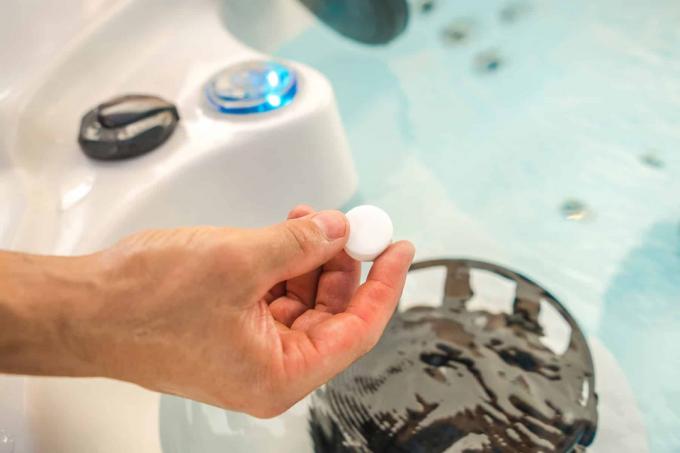
Too much chlorine in the pool: swim anyway?
If too much chlorine has ended up in the pool, the question immediately arises as to whether bathing is still possible. What risks can this entail and what are the warning signs? Here are the answers.
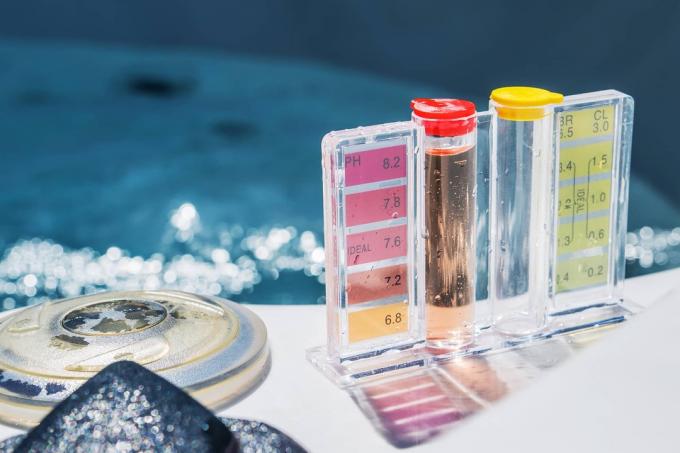
Reducing chlorine levels in the pool: chlorine levels explained
Is the chlorine level in the pool too high and bathing is not possible? Then good advice does not have to be expensive, because the chlorine values can be easily reduced in several ways and thus brought into the optimal range.
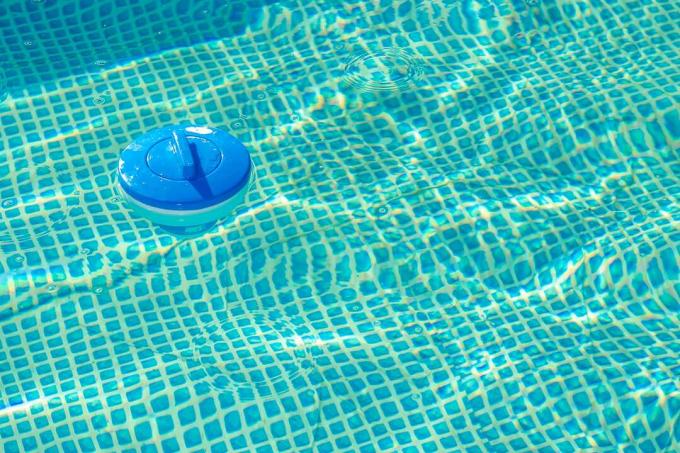
Pool initial filling: initial chlorination dosage
When the pool is about to be filled for the first time, the question of initial chlorination also arises. When and how is it carried out and what dosage is correct. This guide shows step by step how to do it.

How much chlorine in 1,000 liters of water?
Chlorine can keep pool water clear or, as shock chlorination, remove cloudiness and green discoloration. The question of how the right dosage and the optimal values look like arises again and again. This guide provides comprehensive answers.



